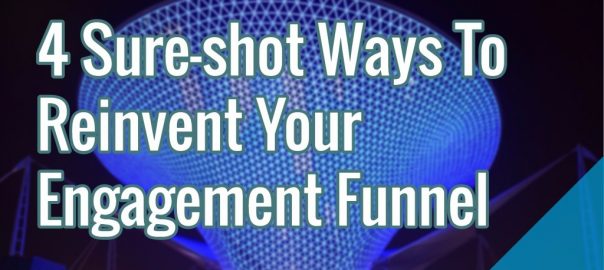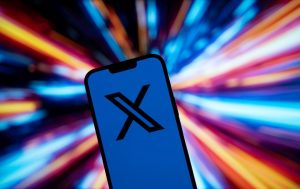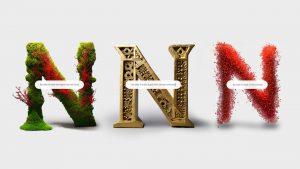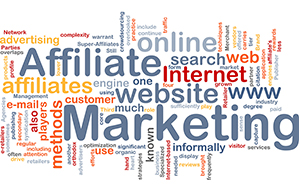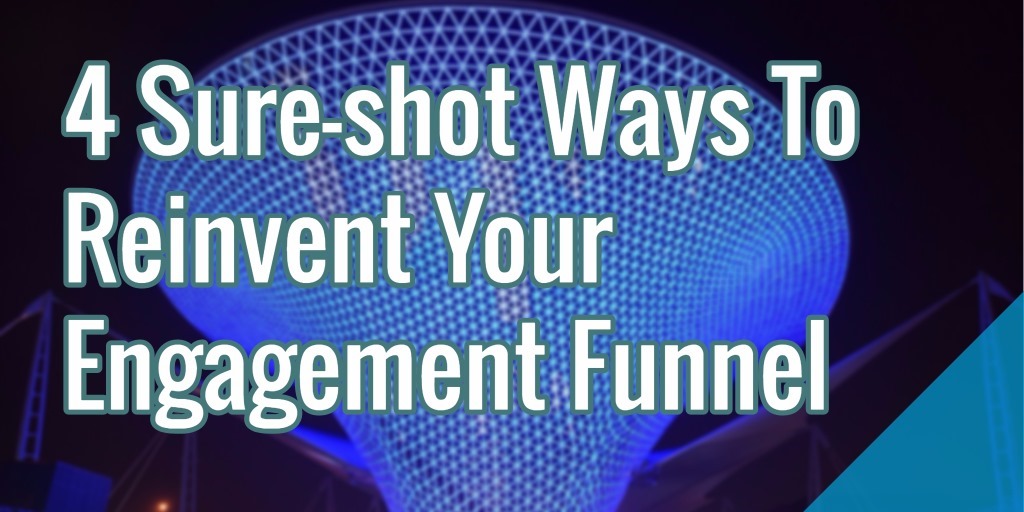
The best marketing funnel models I have come across are the ones that don’t taper at the end – a sale doesn’t bring up the “bofu.” Engagement is an ongoing process, no matter which stage of the journey your customer is at. It is your responsibility to keep your visitor constantly engaged, from the time she visits your website until she becomes a brand evangelist, and thereon.
The following engagement funnel addresses various engagement tactics at different stages:
However, these are just mere tactics with no definite actionable plan to go with. Read on to discover five steps that can help you create a watertight engagement funnel.
Create A Long-term Brand Messaging Campaign
Marketing and sales campaigns are so (November 18, 2016). What you need is a long-term communication and messaging strategy to maintain constant contact with customers. The problem with communication plans today is they are too short-term and nearsighted.
We seem to have landed in this pickle because of the word “campaign,” which by definition means “an organized course of action to achieve a goal.” As a result, we instinctively tie a goal at the end of each campaign and habitually demand to see instant and consistent results.
If you want to create a super-effective engagement funnel, the first rule is to ignore goals. Think about how you want your product, your brand, and its personality to evolve, create a long-term messaging campaign, and start measuring KPIs, but don’t restrict them to a timeframe or attach a goal to it.
I’m not saying short term campaigns can’t deliver positive outcomes in the short term, but these results are seldom enough to build a lifetime relationship with a customer. So, create an “ongoing campaign” that has a long shelf-life, builds brand value, and establishes a strong relationship with customers over time.

Now comes the most important question – how long is a long-term engagement plan supposed to run – one month, one quarter, one year, or is it really supposed to be unending? If it is, how would you measure results? The answer lies in a flowchart or possibly a Gantt chart.
Redefine Goals
Flowcharts provide a visual representation of the overall engagement strategy. They help you divide the campaign into various small tasks and outcomes. Ultimately, this will help you understand how engagement is affecting or fueling micro-conversions in your funnel. This in turn allows you to lay down more long term goals.

Gantt chart tools, on the other hand, are even better. They provide time-linear representations of all campaigns, every task within the campaigns, and interdependencies between tasks, so you can track holistic progress. Comprehensive project management tools such as WorkZone or Wrike (as opposed to basic collaboration and scheduling tools like Basecamp or Asana) give you the facility to draw up the right Gantt charts that map the execution of content and other marketing strategies.
Establish Baka-Yoke Communication Standards
Baka-Yoke is a Japanese term which means idiot-proofing (or, to put it mildly, error proofing) through prevention, correction or drawing attention to mistakes. The Baka-Yoke technique was first used in Toyota’s manufacturing facilities to reduce human errors. A simple example would be a print device that stops printing when it runs out of paper. Another, more intuitive one is Ma Yi Xuan’s USB plug that can be plugged both ways:
From printers to guns, phones to drones, idiot or mistake proofing is an essential part of any process.
When planning your communication process, you need to idiot-proof your strategies too using the following methods. Firstly, you need to train sales agents and customer care representatives to handle customers in all possible scenarios, including crises. You then set out to streamline processes, eliminate data discrepancies, set up automated alerts and actions. Lastly, research, develop, establish and customize channel-specific communication standards, be it email, social media or live chat.
Use Content Consumption Habits To Convert
In an age where personalization differentiates extraordinary customer service from the average, if you aren’t providing a personalized experience to your customers, you are doing a great disservice to yourself.
One of the best benefits of big data tools is perhaps the ability to dissect purchase behavior and make sense of customer interests, allowing you to personalize responses to their queries. Let’s say you send out a monthly newsletter consisting of posts, news, and tips. You notice that a large percentage of your subscribers clicks on to the “Weekly Tips” section. You might act on this bit of information, create a handy e-book and send it pro-bono to these subscribers – and voila, they become your lifelong fans!
Combine data insights and engagement history with marketing automation and CRM tools, and you have a winner on your hands that allows you to identify your most valuable customers and nudge them down your funnel.
How, you ask? Many automation tools allow you to assign “scores” to leads. If someone seems to have reached a particular stage in the customer journey or performed a pre-defined action, you can consider them “qualified” for a sale and engage them through appropriate strategies that involve some marketing automation.
But wait: aren’t automated replies synonymous with canned responses? Don’t they have a bad, bad rep? Yes, but don’t be quick to discard them as unusable. Automated messages help you maintain communication standards, respond quickly within a given timeframe, and are handy for simple updates that don’t warrant human intervention. Content automation helps you cut down the engagement goals we discussed above and make them more manageable.
For instance, GetResponse, a marketing automation solution for SMBs, allows you to automate engagement beginning with a customer’s first touchpoint with your brand, continuing well after she has been converted into a paying customer. With GetResponse, you can build “workflows” that represent customer journeys, and employ quick chat responses, triggered emails, and retargeting offers to engage customers at various touchpoints.
In the above example, you can see how “scoring and tagging” works – a visitor who abandoned her shopping cart is engaged using emails and retargeting. Scoring and qualifying the lead allows you to decide the amount of discount (acquisition cost) you’re willing to give in order to convert them into a customer.
IFTTT is another nifty, multipurpose tool that lets you customize your reactions based on the way different segments of your audience consume your content. Much has been written about it, so I won’t bother repeating it here.
Over To You
Engagement becomes extremely complex as the size of the audience, number of channels, and scope of interactions increase. If you’re communicating with your customers via email, social media, phone, and in person, not only does it become very difficult to measure the effectiveness and outcome of each interaction as well as the whole engagement campaign, but the margin for error also increases. The strategies and steps we discussed here might just prove instrumental in creating a leak-proof engagement funnel.
* Adapted lead image: Public Domain, pixabay.com via getstencil.com
4 Sure-shot Ways To Reinvent Your Engagement Funnel
The post 4 Sure-shot Ways To Reinvent Your Engagement Funnel appeared first on Search Engine People Blog.
Search Engine People Blog(86)
